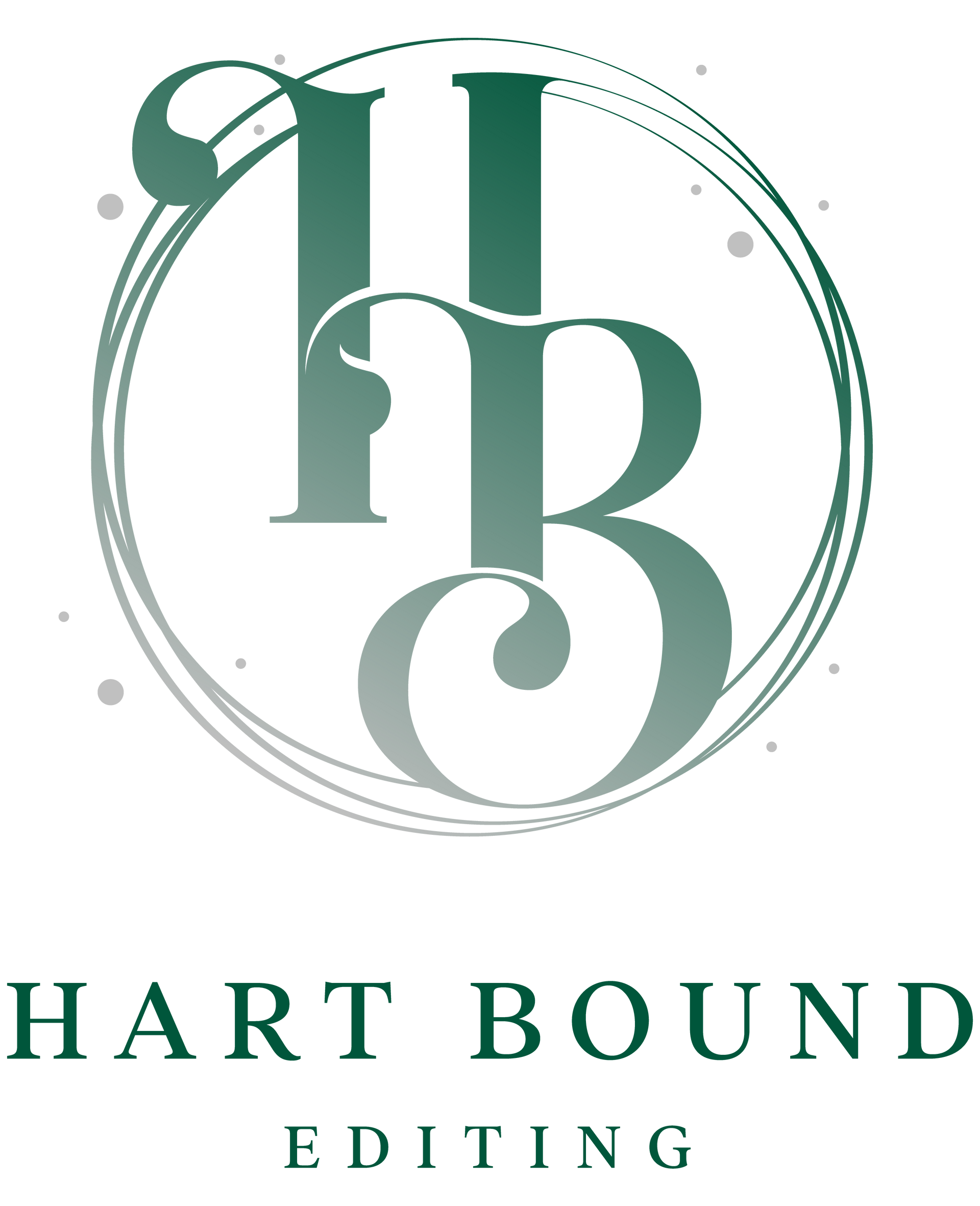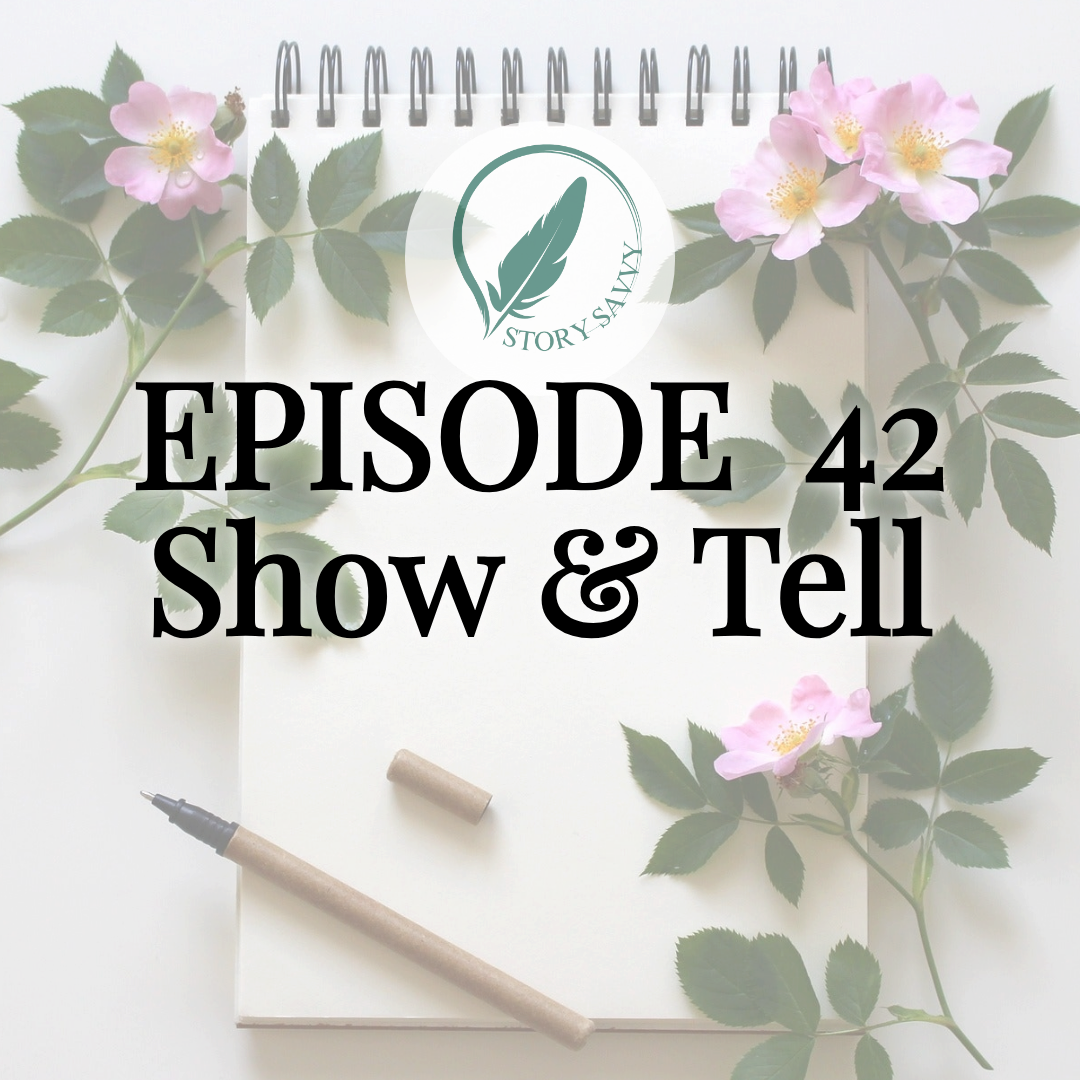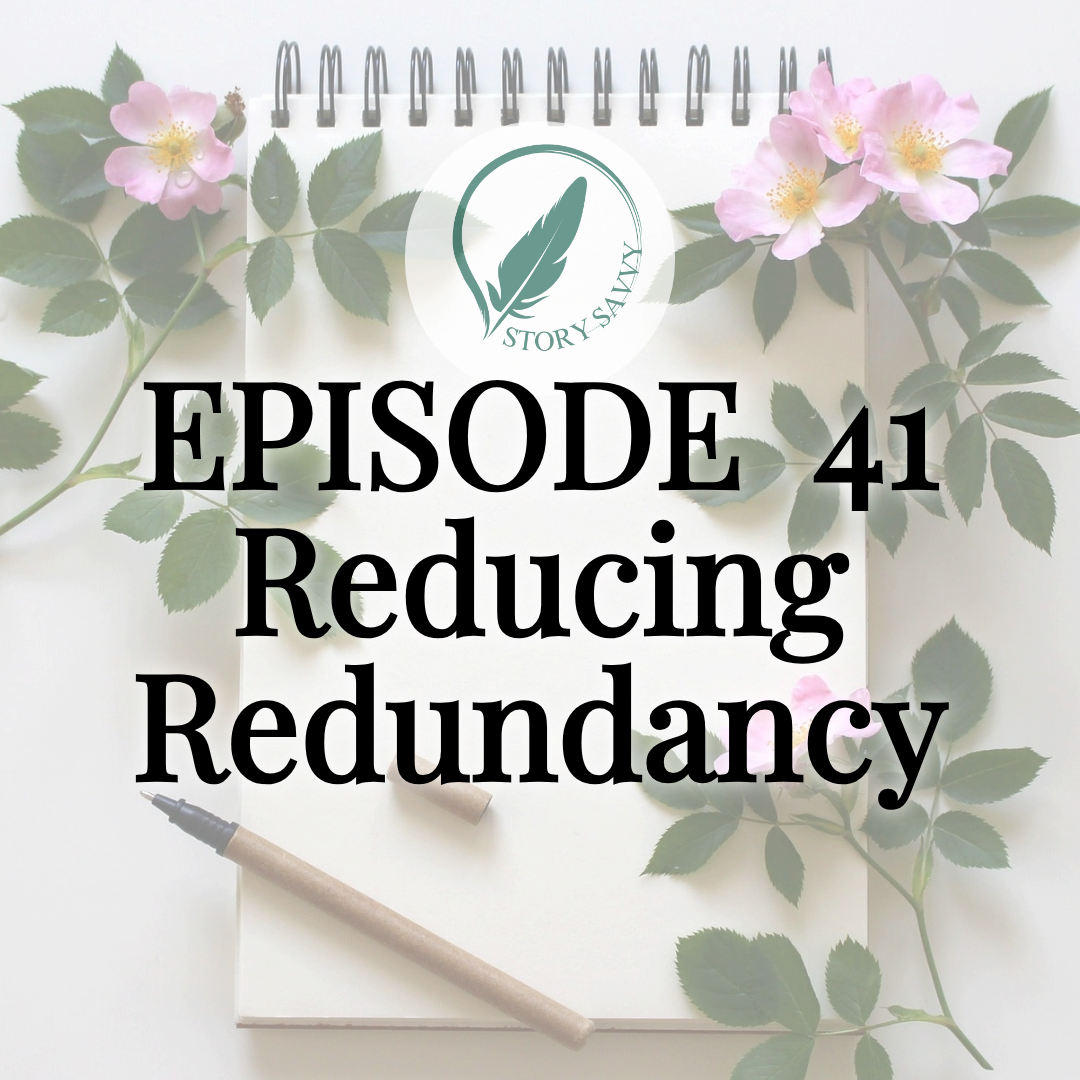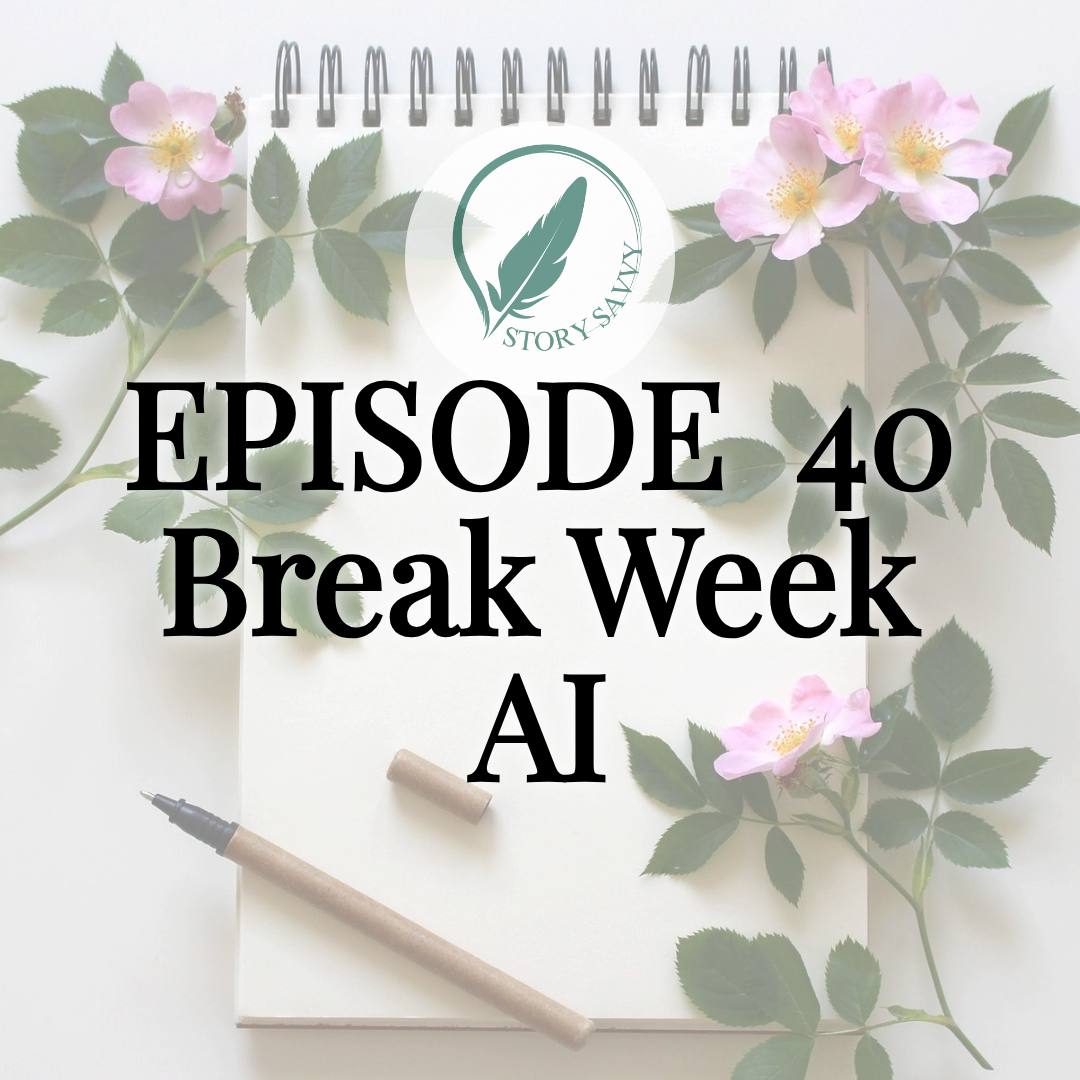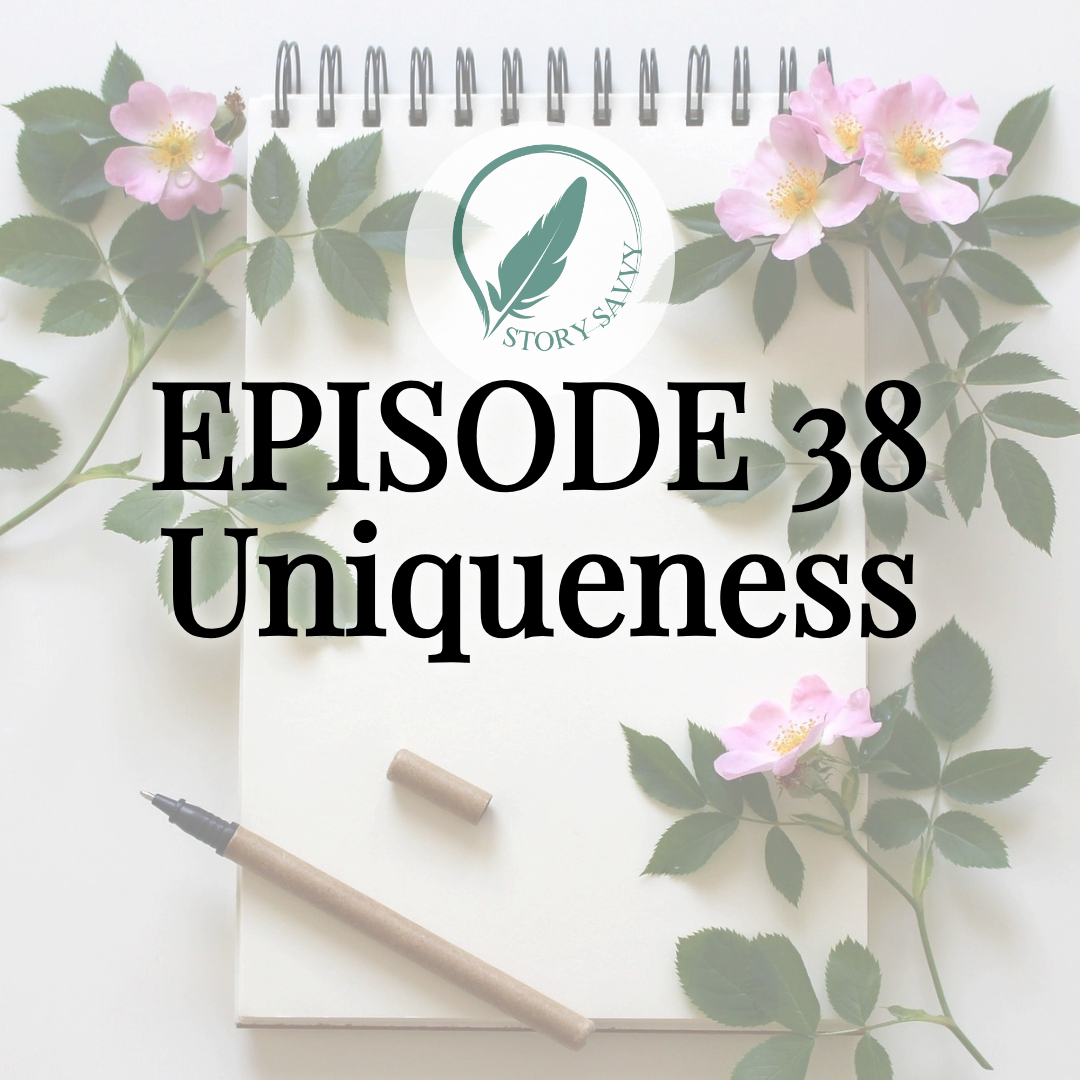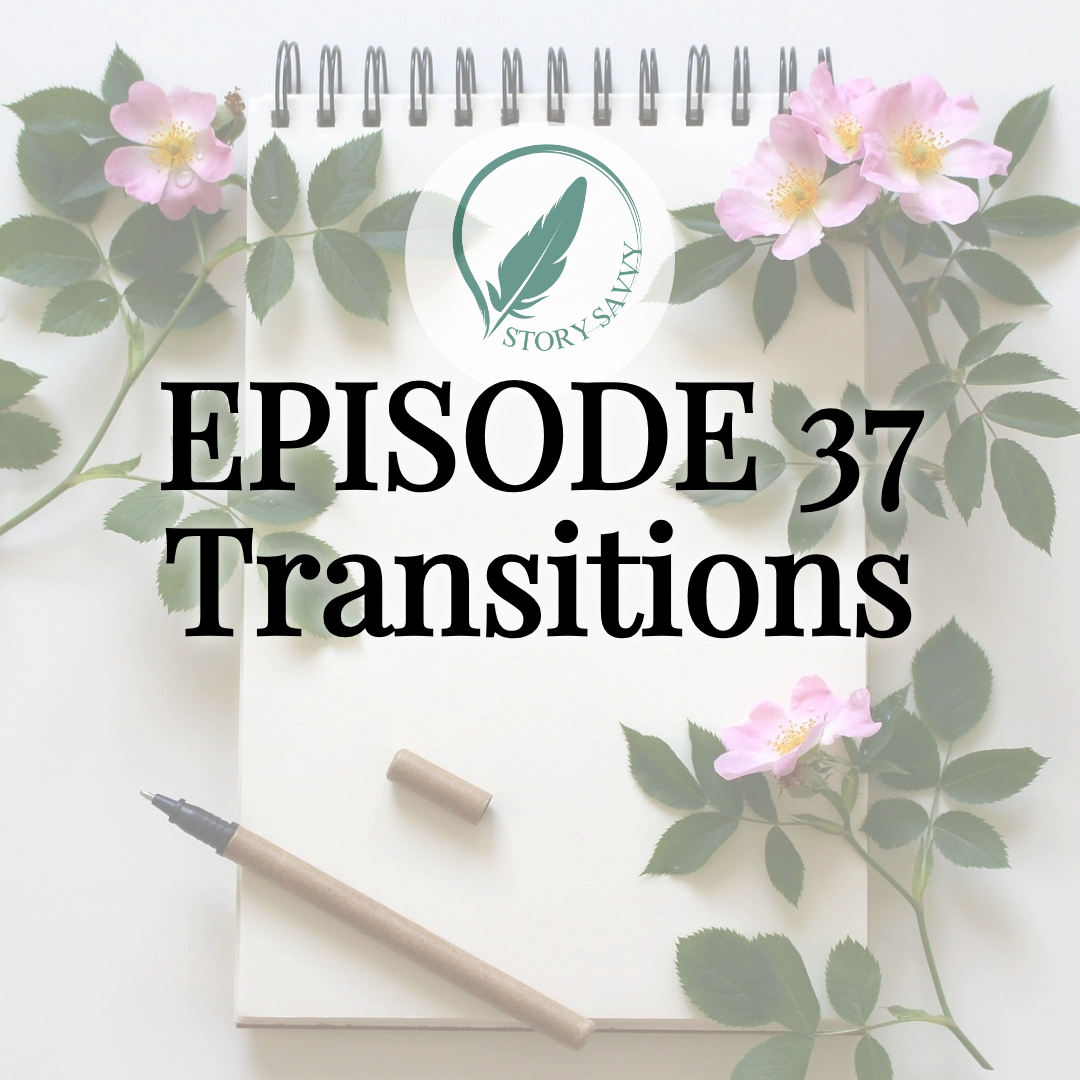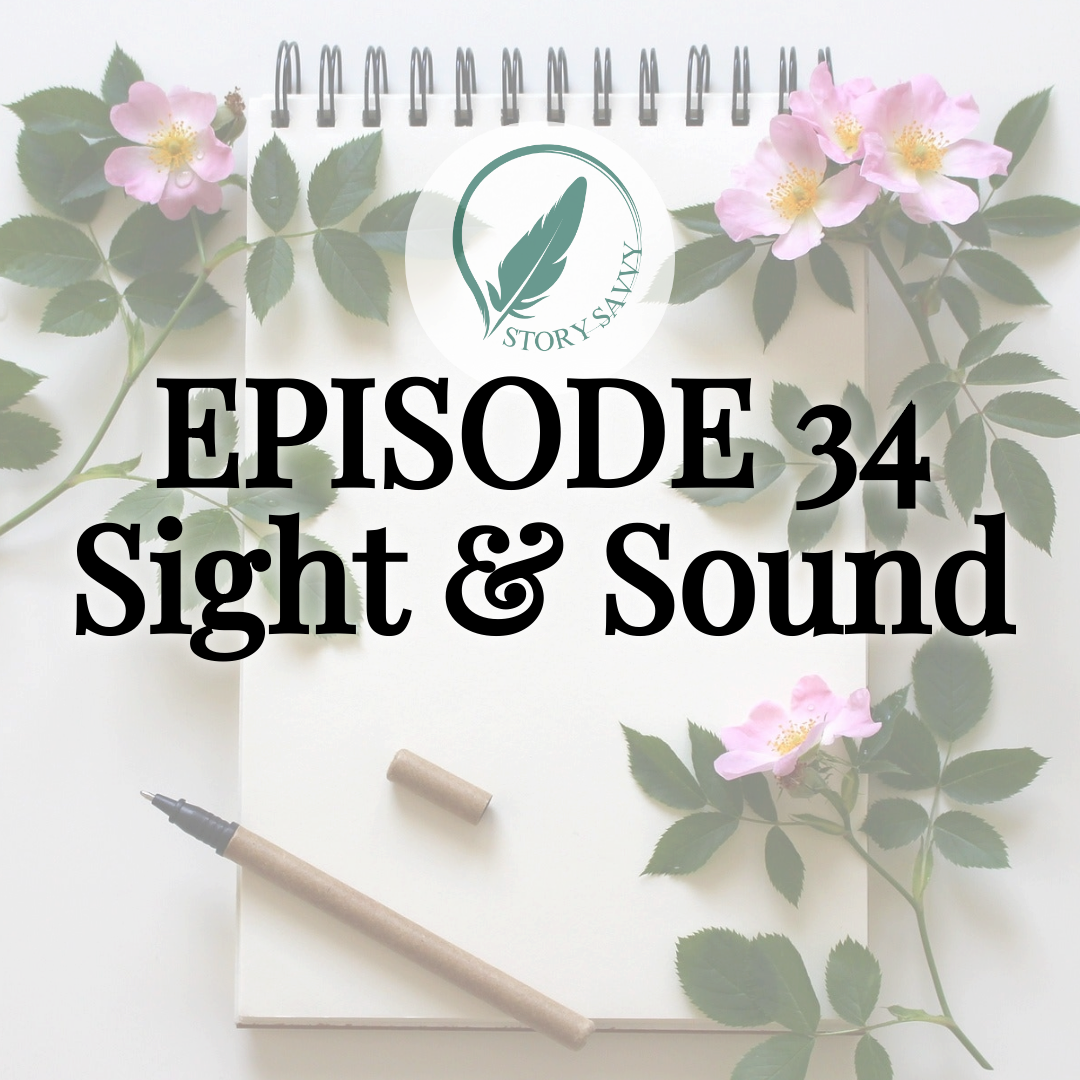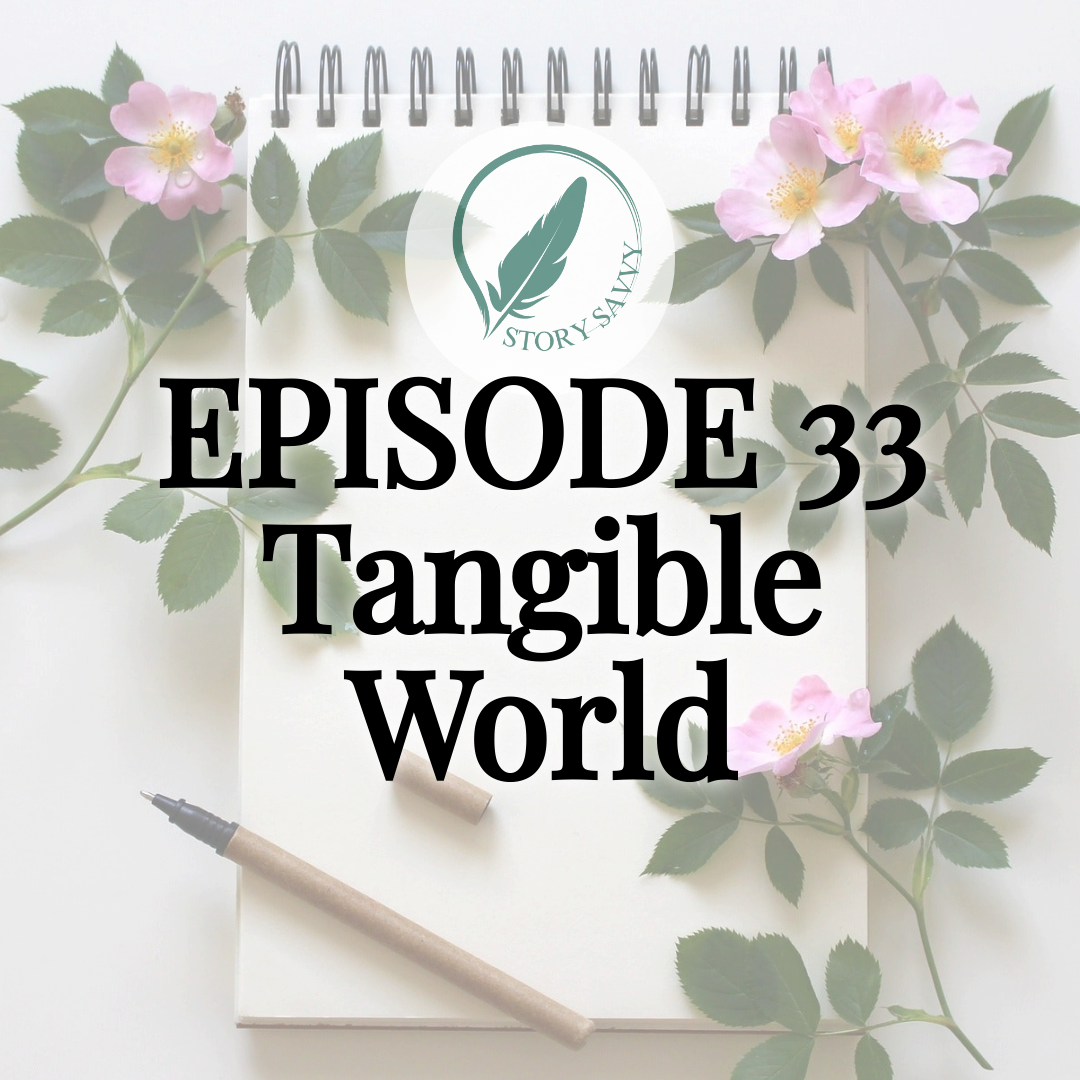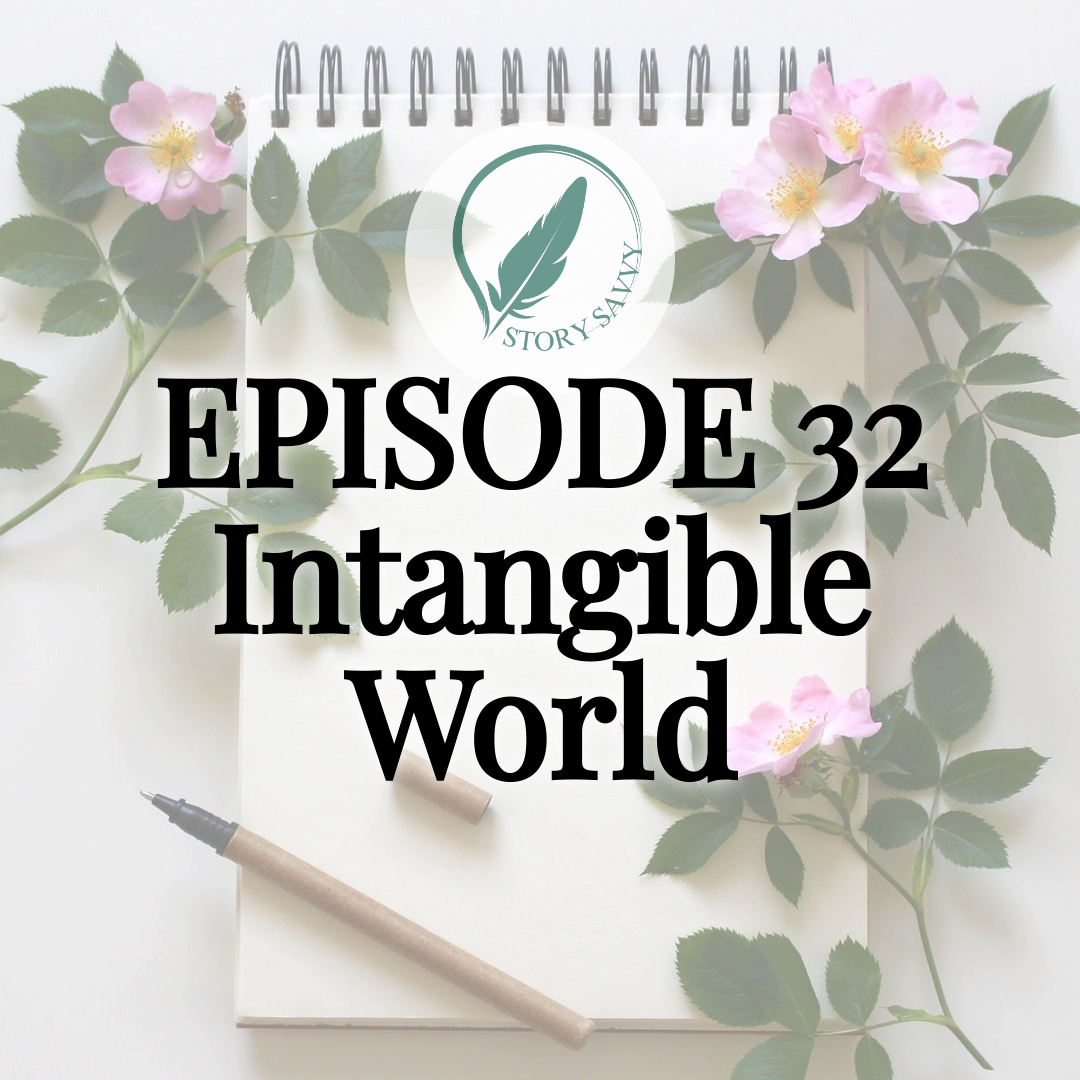Polishing POV, Tense, & Person: Story Savvy Self-Editing Episode 39
Polishing POV, Tense, & Person: After-episode thoughts & transcript…

At one point in this episode, I say that the omniscient POV style choice is “very uncommon”, and I just want to add some clarifying caveats to that. Specifically, it is very uncommon in books written and/or released this century, and within my specialty genres of romance, fantasy, and historical. If you are looking at masterworks or examples from the 20th century or other genres, such as epic high fantasy adventure which is where I see it the most modernly, then intentional omniscient narrative style consistency may be more common or accepted by readers.
I also listed
proofreaders twice in my rundown of the different kinds of feedback readers, which was just a brain glitch. Between line editors and proofreaders are
copy editors, which edit for spelling, grammar, and punctuation before you move on to a proofreader.
Lastly, the other episodes in this series referenced in this one are:
Episode 15: Checking Your Narrative Style Choices
Episode 37: Handling Jumps in Time, Place, & POV
Happy editing!
Episode 39 Overview:
Polishing POV, Tense, & Person
“Are there any head-hopping or tense/person inconsistency issues I need to clean up in my manuscript before asking someone else to read my novel?”
In this episode of the Story Savvy Series, we explore narrative clarity tips, self-editing fiction, and how to sharpen your manuscript’s professionalism. Together, we’ll cover editing multi POV stories, strengthening narrative consistency, and applying omniscient narration tips with purpose. By the end, you’ll understand how to refine your draft so it reads seamlessly keeps readers immersed in your world.
In this episode of the Story Savvy Series, developmental editor Rebecca Hartwell and aspiring fantasy author Agnes Wolfe revisit person, tense, and POV choices with a focus on polishing consistency. They break down how to spot and fix head hopping, tense slips, and person shifts—three of the most common page-level issues that disrupt immersion. You’ll walk away with clear, practical strategies to self-edit these problems so your novel carries professional polish from start to finish.
In this episode:
- How to identify and fix head hopping
- Common tense slips and how to correct them
- How to spot slips between first and third person narration
- Best practices for editing dual or multi-POV books
- When omniscient narration works—and when it doesn’t
- Why consistency in person, tense, and POV builds reader trust
Recommended Resources:
Hart Bound Developmental Editing: www.hartboundediting.com
Authors’ Alcove: www.authorsalcove.com
See you next week for episode 40: Break Week: AI In Writing & Editing
Episode 39 Transcript:
Polishing POV, Tense, & Person
Rebecca Hartwell: Hello and welcome to the Hart Bound Editing Podcast. This is episode 39 of the weekly Story Savvy series, where we tackle the 52 biggest self-editing topics and tips to help you make your good story great as an aspiring author asks me, a developmental editor, all of the questions that you have wanted to. We've covered so much in this series so far, including last week's episode on dialing up uniqueness in our stories. Today, we are going to revisit narrative style with the express purpose of cleaning it up as much as possible in self-editing. By the end of this episode, you'll hopefully have a better grasp on how and why consistency in these areas is so important, and feel ready to dive into polishing them in your own work. Joining me to ask all of the questions is my good friend and co-host, Agnes Wolfe. Hello.
Agnes Wolfe: Hi, I'm an aspiring fantasy author who hopes to release her first middle grade fantasy later this year, and host and founder of Authors Alcove. I'm here today to revisit and check our person tense and point of view choices. So, how is what we are talking about today different from what we talked about around narrative style choices much earlier in the series?
Rebecca: When we talked about this back in episode 15, it was very much about assessing the choices that we had made and considering whether or not we wanted to make different ones. So, looking at your book and seeing, “did I write this in first person or third person?” for example, and “is that working the best it possibly could for this story, do I want to change that?” What we are looking at around this today is just going through and catching any mistakes within those choices we might have made during the drafting or editing process. So, we are looking at head hopping to be fixed, we are looking at breaks in your chosen tense, and we are looking at mistakes with your chosen person for your book, based on the decisions you made earlier.
Agnes: Okay, so what is our ultimate goal with this round of edits?
Rebecca: To have 100% consistency on all three of these points. These are some of the most glaring page-level mistakes readers will catch, and cleaning them all up helps a lot with readability, perceived skill of the author, perceived value of the written work, momentum, and reader immersion. The goal here is to make sure that we don't have any mistakes around POV, tense, or person when it comes to consistency.
Agnes: So, what do issues with POV look like? Like, how can we catch them, and what do our fixes look like?
Rebecca: So, issues with POV are typically referred to as head-hopping, which, if you've been writing for a while, you've definitely found that term, you can find lots of information about that everywhere, basically. So, head hopping is where you are in one POV for a while, or established, as stated, whatever, and then at some point, you end up mentioning something that can only come from a different point of view, from a different experience or perspective. That “hopping” from one character's head to another is jarring for the reader, and it can be very confusing about whose experience we are in, who I should, as a reader, be paying the most attention to, all of these kind of different things. So, that's what head hopping is. Specifically with dual POV or multiple POV, this tends to come up more, because at some other point in the book, you are in that other perspective, you are in that other experience, and it becomes even easier to end up falling into different POVs within a scene, which is head-hopping. With omniscient narration, that isn't a thing. If you're writing omniscient, that means that you are either in nobody's head, and you are very much sort of that deity perspective that's just looking down on things that are happening, you're not inside their emotions. Or, you are inside everyone's perspective; you are able to just sort of move between all of these different perspectives. So, an issue with omniscient would be, for example, staying in one POV for too long or being inconsistent with the kind of omniscient narration you're doing, but then having omniscient come into a book that isn't generally that is an issue to be fixed. Another POV issue to watch out for is a future perspective. And I almost always catch this in the last line or two of a chapter in a book. And it's where, you know, the chapter is wrapping up, and it's all coming together, and there's a moment of wrap-up for that chapter, that scene, and the author will drop in a line of, “And so-and-so would never betray that trust,” or “would live out the rest of his life believing that was true.” You can't say that unless the story is very specifically being told by someone in the future of the story that is happening. So, keeping a very careful eye out for any sort of future tense of, “how could they possibly know that in this moment?” can also be a POV issue more than it is a tense issue. So, fixes to POV issues should look like being able to read through an entire chapter and not have one single sentence or word which doesn't come from the specific POV that you have chosen. So, barring omniscient—and it is very uncommon—that means being able to read through a whole chapter and never having a word or a sentence coming from outside that one POV character's internal, personal, singular experience.
Agnes: And I think I just corrected one in my own, and it was very subtle, but I just hadn't mentioned how this person felt agitated. And I realized, wait, I can't say that because she doesn't know. She could see that he might feel agitated, but she can't feel that he is agitated. So I had to show it from her perspective, and it was something small, because I didn't think that I was having very much trouble, but I did find that one singular spot, and I'm like—
Rebecca: Yeah.
Agnes: Oops! Oh, better change it! Anyway, so I would just like to dive just a little bit deeper talking about books that are dual POV, or multi-POV, or omniscient POV, and maybe rules, guidelines, just whatever we may need to think about with those type of books.
Rebecca: Yeah. First of all, that's a great example, and yeah, little moments like that of naming an emotion can slip through so easily. Honestly, I've had to edit so many times in my own books to make sure that I get them all. So, in dual POV—or multi-POV, where you have more than two characters who have POV scenes—the same rules absolutely stand. Only one POV per scene or per chapter is acceptable, and you MUST use a full scene break or chapter break anywhere where you move from one POV to another. Otherwise, that is head-hopping, and that is an issue to fix. And I warn folks away from overusing that tool instead of fixing the problem. If a scene that you have now split out because you need to change POV doesn't have a core scene event to itself, with no further breaks in between there, like we talked about in episode 30, or that little scene fragment to change POVs ends up being less than a thousand words, so that you can hop over to that new POV for a minute, then you need to take that scene break back out and instead fix the head hopping so that it is consistent for long enough, and consistent around one whole core scene event. If you choose omniscient narration—so, not multi-POV necessarily, but more everyone POV, which is omniscient—then, make sure that there is a mix of POV on every page, so that the reader never forgets that it is omniscient, as staying in one POV for too long would make the next jump to someone else feel more jarring. Likewise, if you choose a framing device in which it makes sense that the teller of the story is speaking to the reader, telling this story from a future point beyond the events that are unfolding, then it's totally okay to have mentions of what’s coming next, or how the protagonist or whatever character plays out the rest of her life. That's fine, but that needs to be clear. With that, too, it needs to be very clear and done regularly enough where this specific character telling the story is mentioning things like that, or speaking to the reader in that sort of direct way, that it stays unsurprising throughout the narrative.
Agnes: So, what do issues with tense look like? We were just talking about POV, but let's specifically talk about tense. What are issues with tense look like, like first person or third person, and how can we catch them?
Rebecca: The most common issue that I see around tense tends to be around pronouns, such as saying “she's” instead of “she’d,” things like that. Obviously, if it's in dialogue, that can be an exception. People can speak in present or past tense, depending on context. That's fine. So, I mention this because I've had an author that I worked with try to do a find and replace to fix that, and it messed up a bunch of their dialogue, so keep an eye on that. But yeah, if you aren't super clear on tense, because I think this can be tricky for a lot of people, I suggest that you start by giving yourself a foundational understanding of first versus past tense from Google. Once you really understand the difference between present tense and past tense—or future if you really want to do that; it's very, very uncommon—then, when you do your next read of your book, keep an eye or an ear out for any exceptions to the rule that you picked for your book. If you chose past tense narrative style, then if you catch anywhere where you used present tense phrasing outside of dialogue, you need to fix that. The same goes for any tense choices. The only non-dialogue exception for this is internal thoughts, which should pretty much always be in first tense, even in past-tense-narration books.
Agnes: So, what about the same question for person issues, like first person versus third person?
Rebecca: Pretty much the same answer. Make sure that you are solid on the difference between the different person options, and keep an eye out for any deviations to whichever one you chose in order to fix it. The exception here, of course, is dialogue, and again, internal thoughts. Those should always be in first person if they are true, internal—italicized, if we're talking about formatting—thoughts. Even if a third-person-narrated book is using these internal thoughts, they should still be in first person, because it's essentially internal dialogue, and dialogue should be in first person when you're talking about yourself.
Agnes: So, I'm not sure if this is two questions or just one, but I know that it's super hard to catch in your own writing, because you know what it says.
Rebecca: Sure.
Agnes: So, I guess one question is, how can we catch them in our own writing? But even bigger than that, let's say we realize that we have a huge issue of tense changes and that sort of thing. How do you suggest approaching or tackling these edits, since they might feel a little overwhelming?
Rebecca: Yeah… These are overwhelming, these are a lot of work. For POV, the best way that I can suggest that you catch these issues is that you stay very much in one character's eyes for a scene. And the way that I did this in my own first book, when I was really figuring out things like head hopping, was I had a sticky note that had my protagonist's name on it, and I would stick it to my laptop screen as I was editing. And having either the name Angie or the name Daniel in my peripheral vision as I'm reading through allowed me to keep myself much more grounded in that one particular perspective. So if I was in an Angie POV scene and I'm scrolling through, reading, and I see a moment—so a mention of emotion, like you talked about earlier, or an observation that can only come from Daniel's POV—then I get that little jarred feeling of, “wait, no, I thought it was an Angie's POV.” And reading through really, really trying to keep yourself within the head of the POV character that you intend to be the only POV character for a given scene is the easiest way to do that. Let’s see, so, you can kind of also do this with tense and person. Have a sticky note, have it on the surface that you are reading your story on, and just keep that in your peripheral vision, literally and metaphorically as you're reading through, so that if you catch something that isn't what it's supposed to be it just catches, like a little burr on fabric, and you can stop, really assess it, and then ideally fix it. A little tip here would be, if you catch a mistake that you made—so, if you catch, let's say, a particular word that is the present tense of that word but you're trying to write in past tense, when you fix that instance, do a quick search in your document for that same present tense incorrect use of the word. If you messed it up one place, it's likely that you messed it up somewhere else—you know, if you mess it up in one place, there's a decent chance that if you made a mistake elsewhere, it's more likely to be that same word than another random word in the English language. So, when you catch a mistake do a quick find and replace and see if he made the same mistake anywhere else. That can save you a lot of grief. I will mention: doing that, make sure it's not dialogue, because, again, I've seen that messed up. So, beyond that, you can absolutely, if all else fails, try to get a couple of good beta readers or critique partners before paying for any editing, and ask each of them to flag all the instances that they catch of one of these layers. Don't get one beta reader and say, “hey, I need help cleaning up my POV tense and person.” That's not fair to them. Ask one reader, “hey, all I am asking for this feedback read, the only thing I need your particular feedback on is POV.” And then have a different reader, where you make that same exact narrow request for just tense, and then a third for just person, and so on. Trying to ask them to gather all of these layers at once is, as you mentioned, as you suspect, a stupid amount of work if you have moderate to severe issues with any of these layers.
Agnes: I love the “moderate to severe,” because it makes me think of all of those ads.
Rebecca: Yeah. Illness of a manuscript.
Agnes: I was expecting a full-on ad. No, so, I know that you were my very first set of eyes, and I'd only done a couple edits myself. So, I wanted to ask a quick question, kind of deviating from what we were talking about, because you did bring up, you know, beta and alpha readers.
Rebecca: Sure.
Agnes: When would you recommend, and who would you recommend being, the first, second, third eyes as far as… What I'm referring to is, with the developmental editing being in there?
Rebecca: I'm not entirely sure I understand the question.
Agnes: Okay, so you were my very first set of eyes, and I paid for you, and you suggested having people read before you actually pay someone else to read.
Rebecca: Sure. Gotcha.
Agnes: How many people would you recommend, and at what stages would you recommend these readings, and when would you look into having a developmental editor?
Rebecca: So, I personally… Okay, let me start by listing the different kinds of feedback that you can get. There are alpha readers that read during your drafting process, so before you've actually finished writing the book, and book coaches are the paid version of that, that happen during the writing process. Then you have critique partners, which can overlap a bunch of these different ones. Beta readers, which is supposed to be after finishing the novel and doing self-editing but before professional editing, and then in the professional sphere, you have developmental editing, which is structure, so looking at plot, worldbuilding, character arcs, that kind of thing. Then you have line editing, which looks at your flow and your formatting to some extent, and sort of the bigger picture, paragraph-level, line-level, page-level writing but will not give feedback on, “hey, your plot isn't working here” kind of things. And then you have a proofreader[IP1] , which is for typos, grammar, and punctuation. And then lastly, a proofreader, who is just doing a final polish after a copy edit. So, having listed all of those, I don't personally recommend alpha readers. I think that getting done with the book is so vital. And trying to get feedback before you have finished writing the book is far more frequently a detriment than it is helpful. What I do recommend is, after you've finished a first draft and ideally done as much self-editing as you can, look for a beta reader and/or critique partner. These two are often very overlapped or interchangeable terms. A critique partner specifically is often another author, and the two of you literally swap books. So, while they are critiquing your book on whatever you guys decide is within the… Oh, what is the word I'm looking for— The realm of the swap, you are doing the same on their book. I personally find this very, very helpful, and this is what I often reach for. Beta readers can be other authors, so a lot of overlap with the critique partner, but they will often also just be readers. So, you find readers who are interested in reading your book for free and giving some feedback on that, and that's what I tend to recommend the most just as a blanket statement. When you're finished with self-editing, get beta readers and implement their feedback before paying for a developmental edit, because you're probably going to have to make some decently sized changes after the beta readers. And once you do that, you want the developmental editor to check those changes. However, that same logic kind of applies the other way around. So, if you pay for a developmental editor first, you're going to have a lot of big changes to make, if they're a good developmental editor.
Agnes: She was … she was.
Rebecca: And then you can use your beta readers to check that. So, it's really kind of six of one, half a dozen of the other. It's up to you to decide. Whichever way makes sense, but whichever direction you think that's going to go, you want to use either beta readers or the dev editor to check the changes that you made from the other.
Agnes: Sure. I know for myself—I'm trying not to deviate too much about our topic, but—I know for myself, I was too nervous to send it off to anybody else except for you, which is why I paid, but now I'm starting to feel like, “okay, I need to get beta readers,” and then I'm like, “do I need to hire a development editor again?”
Rebecca: I would say no. There's going to be individual exceptions for anyone. I offer re-edits on pieces at a discount because I recognize that need to check that you made the right changes, that you got things right. And that's totally valid. But for most people, I would say, if you feel like you took the advice from your dev editor and you didn't, you know, shy away from it, and you actually did that deep work, a beta reader next should be totally fine before moving on to the line and copy level.
Agnes: Awesome. Back to our regularly scheduled…! Anyway, so are there things we should look for in our writing aside from tense and pronoun use that might indicate we are being inconsistent with our point of view?
Rebecca: Yeah, you touched on one earlier, which was naming an emotion that you can't know for sure a non-POV character is experiencing. So that's a common one, for sure. So experienced emotions, experienced physical sensations—so that could be anything from aching bones all the way through nonverbal communication, or physical experiences of emotion, like saying, “oh, so-and-so's stomach twisted.” Well, if you're not in their head, how do you know that kind of thing? Some other sort of flags to keep an eye out for would be opinions that are stated like fact, especially in narration. So, if in narration you say something like “so-and-so didn't think that was a good idea” but it's not your POV character, and they didn't say it out loud, that's head-hopping. It can also be lingering too long on describing only the actions and dialogue of a non-POV character. This isn't technically head-hopping, but still, if you have a non-POV character dominating a full page, that slips that focus out of the POV character, and I remember that you had a fair bit of this in the early version of your book that I edited, where you weren't strictly head-hopping out of, let's say, Amelia's POV, but because so much of the action and dialogue and interaction had nothing to do with her for pages at a time, it felt like this slip out, so then when you re-anchored back in her POV, that was jarring. Another flag to keep an eye out for would be presenting a known fact which the POV protagonist does not know. So, if you're writing, let's say, dual POV and your main male character learned the big secret about the villain, and then in the next scene, it is [FMC’s] POV. If she now also knows the thing, that is potentially head-hopping. One of the ways to fix this issue is simply show the POV character learning the fact, or mention how they learned that fact. But if they seemingly magically, without being shown or told that they did learn this too, that they know this fact that they probably shouldn't, that can also come across as head-hopping.
Agnes: So, for a moment, I'm going to talk about one of my favorite authors, Neil Schusterman. He is the author of the Scythe series, so if you haven't read it, I strongly recommend it. My son-in-law was the one that had recommended it when he was, like, 17 years old, and he hated reading, and I figure if someone who hates reading recommends a book, then you should read the book. So, anyway, one of the things that he did in the final book in the Scythe series, is that he did technically head-hopping. And it was such an event that you kind of needed to see all these different people's point of views, and he did it in such a masterful way. So, I know that we do not have to follow this rule to a T.
Rebecca: Sure.
Agnes: So, if we're trying to pull something like that off, how can we do that in a way that feels natural and intentional and does not jar the reader?
Rebecca: So, first of all, I just want to say, I recommend learning to follow a rule before you intentionally break them. So, learn how to stay in one POV very cleanly and consistently before you attempt an omniscient POV or head-hopping POV perspective. But if you do want to go that route after learning how to follow the rule, then there are a few tips to keep in mind when trying to do omniscient or intentional head hopping—which, they're the same thing—if you want to attempt doing that well. So, first of all, be consistent in that form from page 1, so that the reader gets to adjust to it early on, and that they don't lose track of the fact that that is an established expectation for that book. Second, put extra work into making sure that the who, where, and when is super clear in and after each shift in POV or hop from one head to another, like we talked about in the last episode. No, sorry, not last episode, a couple of episodes ago. Third, make sure that you have a mix of POVs very regularly and consistently, like I mentioned earlier in this episode. If you go from close or limited POV for several pages and then hop to omniscient of any kind, that's going to be much more jarring and confusing than if you keep the POV consistently floating above all of the avatars, or at least try to stay in more than one internal experience on any given page, to keep that aspect, that omniscient aspect, visible at all times.
Agnes: So, wrapping up, I just have one last question for you. When should we be tackling these errors? Is it okay to worry about this after beta readers, etc? We kind of talked about that a little bit.
Rebecca: So, like I mentioned earlier, if you really, really can't spot the issues in your own work on these layers, you can try waiting until during or after the beta process. But honestly, having more than a few issues about any of these is one of the quickest ways to lose good faith with your beta readers, and you don't want that to happen. I've been running a beta critique swap group for a couple of years now, and on the rare occasions I have a reader tap out on a book that they'd signed up for for a different author in the group, the overwhelming reason that they give for doing so is that there were a lot of tense or person or POV issues like head-hopping. On the professional side, you really don't want to pay for this much extra work for a professional editor if that doesn't make sense for you, if you feel like you could do better on your own first. And it's fine if you don't, but for example, I only offer full flagging of every single instance that I catch of head-hopping or tense or person issues with my premium service, which is what you went for—which was great, which is fine. But I do this because flagging all of the issues around head-hopping, tense, or person takes a whole extra read, and many, many hours of extra work as a professional editor. If I only catch maybe 3 to 5 spots where there's head hopping or tense or person issues in a whole book, sure, I will absolutely flag those specific spots at any of my services. But if I catch a good few issues on any of these layers just in the first couple of chapters, then that's way beyond the scope that I can do for the time and effort and expertise that I'm putting in for most clients. And I have to then force myself to ignore those layers of issues in order to provide the feedback on the character arcs and the plot and the world building, which is my actual job as a developmental editor, specifically. So, long answer short: now, right now, in your self-editing, is the right time to polish these three aspects. You have, at this stage in the process, if you're following this series, probably already done the massive majority of your structural or big chunk reworking, which is most likely to introduce these POV person or tense issues, but you haven't yet wasted a whole bunch of polishing and typo correcting and comma adjustment work, which these POV intents and person rewriting and reworking can often overwrite and make the time that you spent fixing up those smaller things wasted.
Agnes: Well, thank you so much for your insight. It has always helped me so much. I appreciate it.
Rebecca: You're very welcome. And next week, I'm excited to announce that we will be starting the final module of this series, which is specifically for the line level and copy level polishing. Specifically, next week, we are going to kick off talking about reducing redundancy. For now, I really want to thank everyone for following along with this series. If you know any other authors who are nearing the end of their first draft or struggling with revising or rewriting their novel, please direct them towards this series. The more authors that we can help understand and finish the process of self-editing, the better. Thank you, Agnes, for joining me, and I will talk to y'all next week!
Agnes: Thank you! Bye!
Rebecca: Thank you so much for listening to the Hart Bound Editing Podcast. I look forward to bringing you more content to help you make your good story great so it can change lives and change your world. Follow along to hear more or visit my website, linked in the description, to learn how I can help you and your story to flourish.
See you next time!
